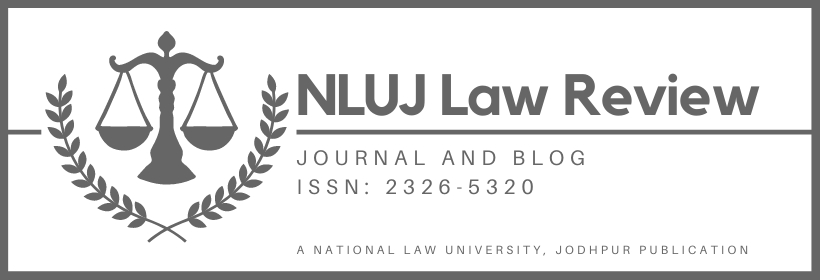Early in 2018, the picturesque South-African city of Cape Town faced a particularly concerning situation. Consecutive years of poor rainfall had left the city’s water resources nearly depleted. In dire straits, many apprehended the nearing of Day Zero – a befitting name for the situation which would leave the population virtually devoid of potable water. More than the actual damage that would ensue from such a depletion, it was the people’s apprehended reaction to it that posed the bigger threat. However, before this Day could arrive, the water management policy rose to the challenge, conservation measures were stepped up, water rationing laws were put into effect.
Per capita use of water was capped at 50 liters per day. A state of ‘National Disaster’ was officially declared by the government. The famous phrase – ‘If it’s yellow, let it mellow’ gained currency, urging residents to avoid flushing toilets when possible. The circumstances were desperate, the measures no less so. The series of events narrated above presaged the advent of the water crisis at a global scale, with India witnessing indications of a water crisis soon after.
A year later, NITI Aayog released a report predicting a total depletion of groundwater in 21 major cities of the country by the year 2020. Soon after, reports surface, disclosing a situation in Chennai which eerily resembled Cape Town’s Day Zero crisis. Although Chennai became noticeable because of the pace with which the crisis accelerated, experts opined that other metropolises such as Delhi and Bangalore were not far behind. Prophecies turned to reality when early in 2020 reports highlighted the gravity of the water shortage in Delhi, with organized crime syndicates taking over water distribution systems.
With an-ever increasing population, India’s water crisis could very well be the greatest bane of the nation’s existence in the immediate future. Quite oddly, however, and unlike the Capetonians, our policy-makers seem to be oblivious to the need of effecting stringent water use laws. The disparity between the amount of concern this impending crisis ought to have generated and the amount of concern actually being shown by governments is nothing less than striking.
In such a backdrop, this article explores the possibility of water rationing laws in the country. The subject of inquiry are not the minutiae of effecting such a legal framework, but the broader and far more apparent challenges that such a regime would face in the present context. The overarching aspects of policy that require change, in order to avert a Day Zero, will also be discussed.
Current Regulatory Framework
Water laws in India have seen gradual development since the times of the Indus Civilization, with ancient Hindu Law providing insights into local water governance. Water, for most part, is a matter within the State List, except for inter-state rivers or territorial/tidal waters.[i] Water management policy, therefore, has mostly revolved around the efforts of individual states. Due to widespread concerns regarding the depletion of groundwater during the 1980s, the Central Government did step up its advisory role vis-à-vis the matter, and constituted a Central Groundwater Authority [“CGA”] using its expansive powers under the Environment Protection Act, 1986.
However, the authority only serves to play an advisory role, with State-level groundwater authorities in actual control of the resource-management systems. Headway was made in 2005, with the CGA formulating the Model Bill to Regulate and Control the Development and Management of Ground Water [“Model Bill”]. A number of states enacted laws based on the Model Bill. However, having been drafted in a time when the water crisis was not nearly as threatening as it is today, the Model Bill and the laws based on it failed to introduce the required amount of stringency and regulation. The Bill, in terms of policy, did not mandate, in positive terms, strict regulation by the State.; much was left to the sweet will of the authorities.
Quite ironically, all this was happening at a time when the Apex Court was pronouncing radically progressive judgments, which incorporated into our Constitutional jurisprudence a fundamental right of access to safe water.[ii] South African Courts saw the birth of similar jurisprudence in the late 90s, with the landmark decision in Mazibuko v. City of Johannesburg. In India, however, policy lagged far behind judicial pronouncements. This widening rift between abstract rights and policy raised little concern until the threat of a water crisis became more tangible in the late 2010s.
In recent times, the National Water Mission was launched, which did manage to capture, in its objectives, part of the policy measures required. A few states separately enacted schemes such as Sujalam Sufalam Abhiyan (Gujarat), Jalyukt Shibar (Maharashtra), Jal Jeevan Hariyali (Bihar), etc. The NDA government brought out Centre-managed schemes such as National Rural Drinking Water Mission (NRDWM), Jal Jeevan Mission (now a part of the NRDWM). Noteworthy is the fact that India’s water law jurisprudence, considering the above schemes and judicial dicta, operates on a rights-based framework. The essential feature of India’s water policy has been to improve and organize supply of potable water.
Due to an overwhelming emphasis on improving access, little heed has been paid to the need to step up conservation measures. The bottom line, as identified by the author, is that the escalated gravity of the water crisis in the foreseeable future, requires policy-making to divert away from a purely access-oriented water management system. As can be inferred from the experience of South Africa in 2018, water rationing laws are no longer a contingency plan. With Day Zero drawing closer in major cities of India, one can already see measures which foretell of an inevitable water rationing regime.
A Progressive Shift towards Water Accountability
The theoretical foundation of a State-regulated water usage policy or a water rationing law can be traced to the status of water resources as a public trust, and the state as the trustee for such resources.[iii] The first step towards an active water usage regulation policy has to start with metering of consumption, pricing and corresponding billing.
The onus for effecting a metering-pricing system quite naturally lies on the State authorities because of India’s constitutional design. Certain states did take first steps towards effecting such pricing regimes. Laws drafted by State governments provided local regulatory authorities with the power to affix tarrifs for water consumption. For example, the Uttar Pradesh Water Management & Regulatory Commission Act, 2008, provided for fixation of rates for water use in various sectors.
However, even in the few states where such powers exist on paper, instances of enforcement are few. The solution to this problem lies in the National Water Framework Bill [“the Bill”] introduced by the Central Government, but which has not yet been enacted. The Bill elaborately laid down principles for water pricing. Despite its comprehensiveness, the Bill is likely to give rise to contentious debates on the extent of the Central Government’s control over water resources, given that it is a State subject. The Bill draws from the Parliament’s power to legislate under Art. 249 and 250 of the Constitution of India. The invocation of these Articles is due to the fact that India has committed to meeting UN’s SDG by 2030.
A less contentious route would be for the States to frame their own legislations based on the framework provided in the Bill. Having statutory regulatory authorities in each State, combined with a functional pricing and charging policy based on the above Model Bill, would be the first step. The second aspect, which has hitherto been largely unregulated is irrigation and groundwater. Owing to the political undertones attached to agricultural issues, governments have been wary of introducing water accountability in this sector. This apprehension is evinced by the fact that even the Central Government’s notification mandating the imposition of Ground Water Conservation Fee (GWCF) exempted agricultural users, even though 90% of groundwater extraction is due to agriculture.
As groundwater levels recede across the nation, exempting agriculture from water accountability would virtually neutralize any other measures for water conservation. Groundwater extraction by agricultural units necessarily have to be metered and billed, albeit, by a different metric than is applied for other users. Needless to say, such a move has to be coupled with corresponding changes in irrigation practices, cropping patterns and therefore, the MSP regime. A classic example would be the growth of paddy in Northern India, which has received much criticism for being responsible for the depleted groundwater levels in Punjab and Haryana. Inspiration in this regard has to be drawn from the experiences of Israel, which legally mandated a countrywide shift to drip irrigation in the wake of its severe water crisis.
The third step, which is likely to gain traction as more and more cities face water stress, is a proper rationing system, with variegated levels of stringency. Several cities have, in the past, implemented milder forms of water rationing regimes. However, as circumstances get more desperate, one cannot discount the possibility of a ‘per household/per capita rationing system’, which could be built upon the metering-and-pricing system. California’s latest water rationing laws have received much attention, since they exemplify the level of stringency that future water laws will need to adhere to. The modalities of a rationing system are numerous and intricate, for example, figuring out a per capita amount of water that is reasonable. South African courts have previously struggled with determining the ‘reasonable’ amount of water that every person must be provided.
In India, given the wide spectrum of lifestyles and living conditions, such questions would need extensive and situation-specific deliberation. A water rationing regime, if the current state of affairs continues, is almost inevitable in most states. Apart from incorporating the changes which have been proposed over the years, governments will do well to divert resources towards formulating ecologically and legally tenable water rationing frameworks to be implemented in the foreseeable future.
[i] The Constitution of India, Schedule 7, List 2, Entries 17, 21.
[ii] Narmada Bachao Andolan v. Union of India, [2000] 10 S.C.C. 664; Subhash Kumar v. State of Bihar and others, AIR 1991 SC 420.
[iii] M.C. Mehta v. Kamal Nath, (1997) 1 SCC 388.
This article has been authored by Sehaj Cheema and Smita Gupta, students at Rajiv Gandhi National University of Law, Punjab.



